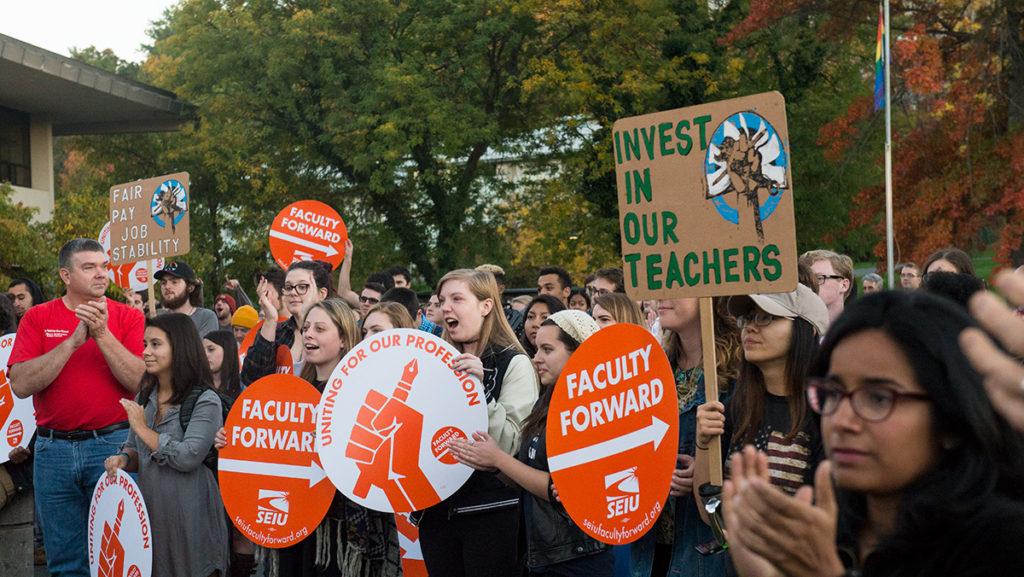The Ithaca College contingent faculty union has voted by an apparent majority to authorize a strike. Provided that the vote received a statistically significant turnout — which is currently unknown to the public — “yes” votes totaling 88 percent would indicate that part-time lecturers and full-time contingent faculty are frustrated with their ongoing negotiations with the college bargaining committee.
While an actual strike has not been officially decided on or announced, the union is one step closer to doing so. The implications surrounding a possible strike have not been lost on students, with the administration’s asserting that a strike would hurt the education of the students.
But the short-term consequences of a brief strike are secondary to the long-term consequences of undervaluing faculty. Thus, if it must come down to it, the campus community should support contingent professors if they go on strike.
Students may worry that not having class due to a strike will be a waste of the money they pay in tuition, but the quality of their education is intrinsically tied to the well-being of their professors. If some professors do not receive adequate pay to support themselves, more time is spent trying to find additional means to pay for what they need. The health of the college — and, thus, the quality of students’ degrees — is dependent upon the quality of the teaching provided by its professors. The issues faced by contingent faculty cannot solely be looked at in a vacuum — their security at the college cannot be disconnected from the long-term well-being of the college.
All this is assuming that the strike vote is truly a mandate. The union has provided the percentage that voted affirmative, but not the raw numbers — how many faculty members actually voted. Though 88 percent is a substantial majority, it still matters whether it’s 88 percent of 20 people or 200. The union leadership should proceed with caution, let the community know how many faculty members voted “yes” and consider the results of the two upcoming bargaining sessions before taking such action.
It is clear that negotiations with the administration have reached a point at which a strike may be the unions’ most effective option. They have engaged with the administration for well over a year with still no agreement on the most pressing issues of compensation and job security. Striking, while some may see it as drastic, is the language of people whose voices and needs have gone unheard and unacknowledged. When silenced and ignored for so long, the unions’ best options are the ones that amplify their voices the loudest.














